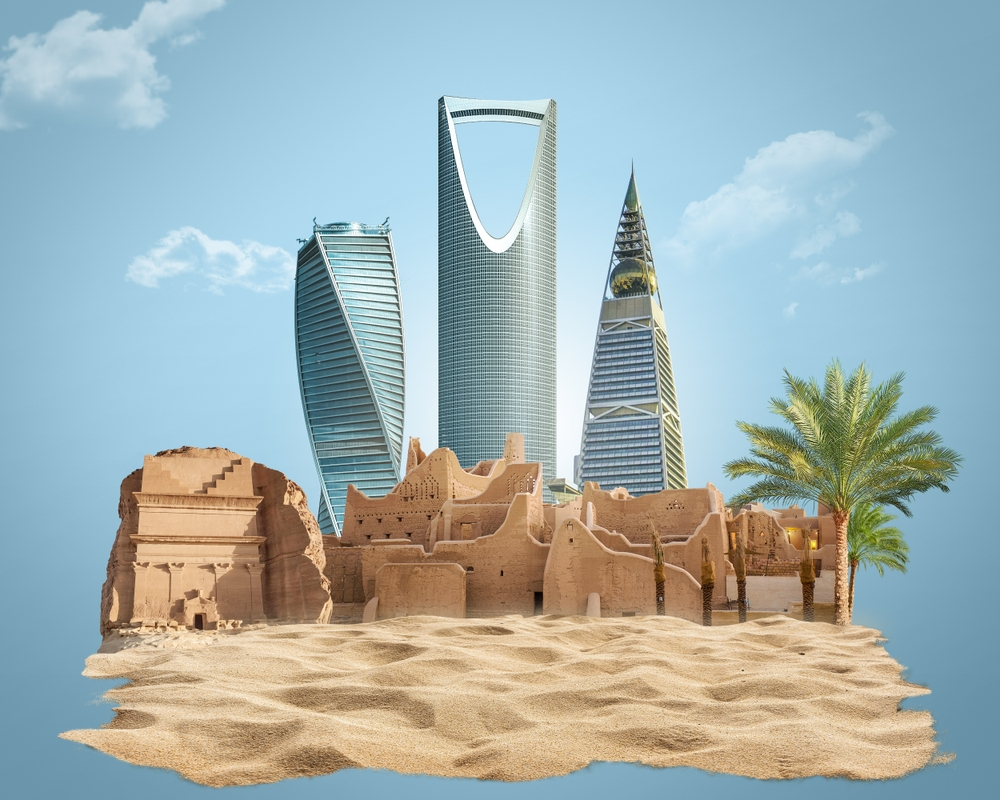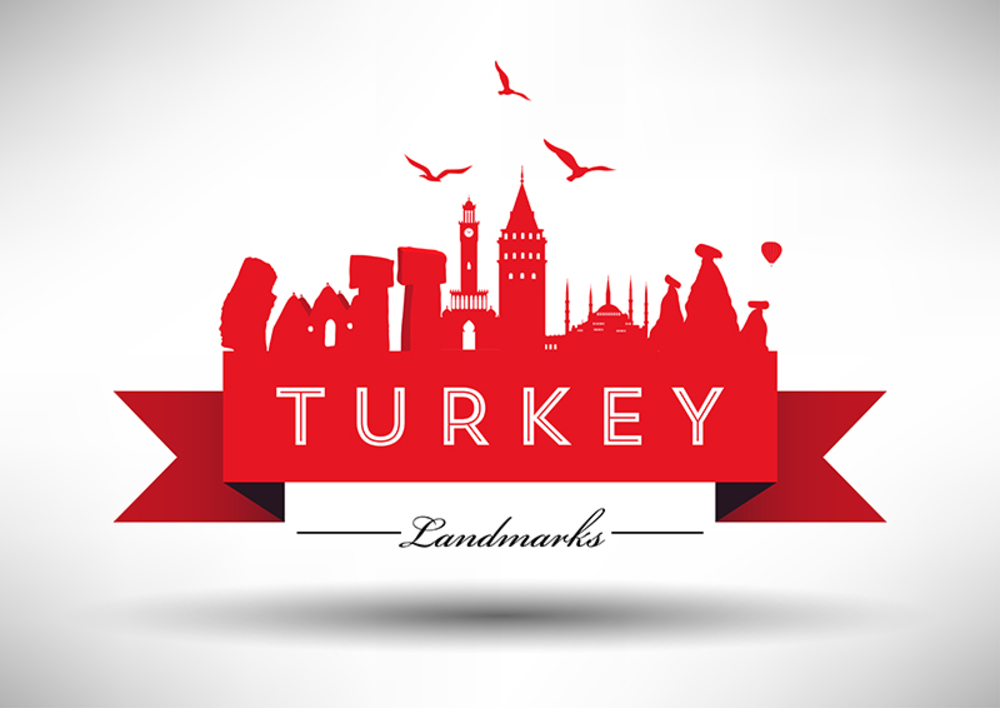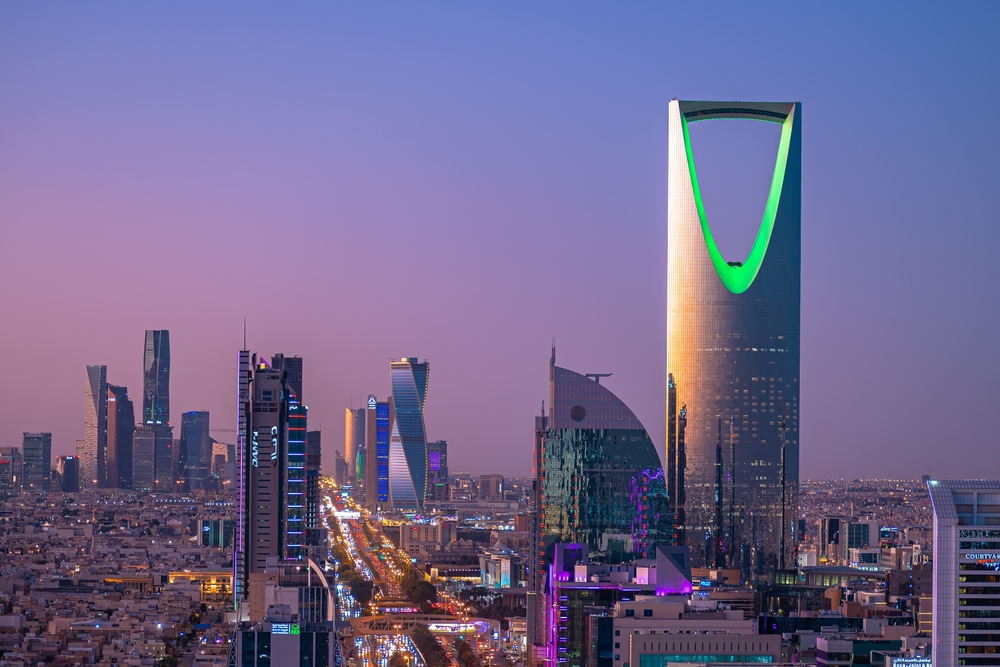Saudi Arabia’s architectural path is evidence of its rich past, cultural legacy, and modern aspirations. From futuristic cityscapes to historic mudbrick towns, the Kingdom’s architecture reflects its society’s constant change. Saudi Arabia today presents a visual story of its development over millennia and is a unique mix of history and modernism.
Traditional Architecture: A Testament to Heritage
Saudi Arabia’s architectural roots are closely related to its topography, temperature, and culture. The old towns of Diriyah and AlUla highlight the creativity of traditional architecture, in which buildings were built to fit their surroundings.
Using mudbrick in places like Diriyah shows a sensible reaction to the severe desert environment. These thick walls and tiny windows helped to insulate against the stifling heat. More than just adornment, the geometric patterns and complex carvings on windows and doors reflected cultural themes and tribal identities, therefore giving the practical design artistic depth.
Cities like Jeddah in the Hejaz area exhibit a different architectural style shaped by trade and its close proximity to the Red Sea. One prominent example is the old Al-Balad area, which features elaborately carved wooden balconies (raw sheen) and coral stone buildings. Inspired by a mix of Islamic and Red Sea commerce cultures, these buildings convey openness and worldwide connectivity.
SAUDI VISA FOR PORTUGUESE CITIZENS
Islamic Influence: The Core of Saudi Architecture
Islamic architecture has permanently changed the urban and rural settings of Saudi Arabia. From the little village masjids to the grandeur of the Masjid al-Haram in Makkah, Mosques throughout the Kingdom are architectural and spiritual icons. Reflecting the core of Islamic design ideas, these buildings stress symmetry, balance, and the interaction of light and space.
Minarets, arabesque designs, and ornamental calligraphy dominate the skyline of old Saudi Arabia. Emphasizing courtyards and covered paths shows a knowledge of community life and meets the demand for environmentally friendly buildings.
The Modern Transformation: Cities of Tomorrow
Saudi Arabia’s architecture started reflecting a fresh ambition and global perspective as it entered the modern age. A surge of modernity in the 20th century produced skyscrapers, shopping centers, and urban infrastructure.
The capital of the Kingdom, Riyadh, captures this change. Its skyline is defined by iconic buildings such as the Al Faisaliah Tower and the Kingdom Centre, highlighting modern designs with local legacy traces. These structures represent the Kingdom’s fast urbanization and worldwide profile.
Not restricted to Riyadh, the modern architectural rebirth is Futuristic designs stressing sustainability and technology are being embraced in cities including Jeddah, Dammam, and NEOM. A foundation of Saudi Vision 2030, NEOM is a mega-project meant to change urban living. Reflecting the Kingdom’s dedication to a sustainable future, the city concept within NEOM, The Line, promises a linear urban structure that removes cars and lowers environmental impact.
Balancing Tradition and Innovation
Among Saudi Arabia’s most amazing features is the way its changing architecture combines innovation with history. Projects like the Diriyah Gate Development seek to bring modern conveniences while nevertheless maintaining the historical character of sites. These projects guarantee that the Kingdom’s legacy stays relevant in the modern world by repairing mudbrick buildings and improving them using modern technologies.
Architectural genius that combines the past with the present is seen in Jeddah at the King Abdulaziz Center for World Culture (Ithra). Its modern architecture and cultural programming highlight the Kingdom’s commitment to inspiring innovation while firmly rooted in its artistic past.
SAUDI VISA FOR TURKISH CITIZENS
A Vision for the Future
Saudi Vision 2030 has sparked the Kingdom’s architectural rebirth in part. Inspired projects are redefining urban living by stressing sustainability, cultural preservation, and invention in this national development strategy.
Among the projects demonstrating how Saudi Arabia uses architecture to boost tourist and economic development are the Qiddiya Entertainment City, Red Sea Project, and Amaala. These initiatives celebrate the natural beauty and cultural riches of the Kingdom while hoping to appeal everywhere.
Conclusion
From old mudbrick villages to futuristic urban centers, Saudi Arabia’s architectural path shows a country that embraces modernism while nonetheless honoring its legacy. Every building bridges the past and the present to open the path for a driven future. The Kingdom’s architecture will surely remain a canvas on which to highlight its vision, endurance, and inventiveness as it develops.
More articles: Unveiling the Beauty of Saudi Arabia’s Coral Islands




